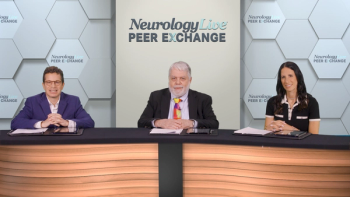
Oral Fumarates for RRMS
Experts discuss types of oral fumarates that are available to treat relapsing-remitting multiple sclerosis, and best practices for selecting an option based on trial data and clinical experience.
Episodes in this series

Jennifer Graves, MD, PhD, MAS: Let’s dive a little deeper into the oral therapy options for MS [multiple sclerosis]. Dr Shah, would you like to start us off by reflecting on data and information surrounding the fumarate class of MS medications?
Suma Shah, MD: Sure. This is one of our tried-and-true classes at this point. It’s been almost 10 years since the FDA approval of dimethyl fumarate. Fumaric acid esters have an interesting history as far as how they came to be used in the neuroimmunology world. It’s a medication that was loved by both patients and providers, partly because of how easy it was to start initially and the change it provided from the treatment landscape at that time, which was primarily injectables and then once a month infusion natalizumab [Tysabri]. Gilenya, or fingolimod, had just come out a few years ago, and then dimethyl fumarate came and you didn’t have to jump through the hoops that Dr Macaron mentioned. You could start with a CMP [comprehensive metabolic panel]/CBC [complete blood count] and the patient could be on their medication within days. That ease of starting made it a beloved medication.
As its patent ended in 2020, there were several other fumaric acid esters, or fumarates, that came onto the market, particularly diroximel fumarate and then monomethyl fumarate. Monomethyl fumarate is the active compound of both dimethyl and diroximel fumarate. Over the last year that they’ve been on the market, we’ve found that they’re fairly equal in how they work in the body. In fact, the FDA has ruled them bioequivalent in its use. They’re easy to use, with a good history of background medications that are twice a day with great data in regard to its annualized relapse reduction rate, particularly compared with some of the interferon therapies that were available.
Jennifer Graves, MD, PhD, MAS: How would you define any distinguishing features of at least 1 or 2 or 3 of the different drugs that are in this class? How would you describe any differences in the data for those options?
Suma Shah, MD: I think you’re asking whether they’re similar in their use to each other, and it seems that we found that in the last year. However, some of the manners in which the medications are taken and the adverse effect profiles are where we’ve tried to see if there’s a huge difference. I’ll share my story.
In September 2020, I was working a day a week at the VA [Department of Veteran Affairs], and our patients were all transitioned over to the generic version of dimethyl fumarate. There were some concerns shared about whether there might be increased adverse effect profiles, such as the GI [gastrointestinal] adverse effects or the flushing that patients encounter. As a result, many patients were switched to Vumerity, or diroximel fumarate. I found that it’s still fairly individual. It seems like there might be slightly decreased GI adverse effects with diroximel fumarate. I haven’t seen quite as much flushing, but I didn’t see a whole lot of flushing with dimethyl fumarate. It seemed to be sporadic and individual. On the whole, they seem to be fairly effective. The ability to switch from the dimethyl to the diroximel fumarates seems to be fairly on the same playing field. From a practice perspective, I haven’t noticed any huge differences that make me lean one way or the other.
Jennifer Graves, MD, PhD, MAS: Dr Macaron, do you have any experiences with the different fumarate medication options? Do you have any other reflections on the data from the clinical trials?
Gabrielle Macaron, MD: What Dr Shah said was reflected in the trials that were done on diroximel fumarate. The EVOLVE-MS-1 study didn’t have a comparator arm, so it was just an open-label phase 3 study. The EVOLVE-MS-2 compared it with dimethyl fumarate, and other than the fact that they work similarly and probably the same efficacy, diroximel fumarate seemed to have fewer GI adverse effects, which was the main advantage of this medication. In other places in the world, such as Lebanon, where I practice, we don’t have those options yet, so I’ve never had experience with another fumarate other than dimethyl fumarate.
Jennifer Graves, MD, PhD, MAS: Thanks for highlighting the point that in different parts of the world there are different options. That’s very important to keep in mind, whether it be due to access or insurance schemes that make it challenging to have all 21 medications as options. That’s a really important point.
I’ll just add that, for this class of medications, there are some mitigation strategies for the adverse effects. Eating meals with fat and protein can help decrease the GI adverse effects with dimethyl fumarate and diroximel fumarate. I have a lot of patients who experience flushing. My real-world experience is pretty similar to the trial data that showed that about 40% of patients have some degree of flushing. I’ve had very few patients stop for that symptom. But if they have to give a big report or have a big presentation that day, I have them take a baby aspirin, which can at least remove some of the embarrassing redness and flushing sensation while they’re doing something important that day.
Thank you for watching this Neurology Live® Peer Exchange. If you enjoyed the content, please subscribe to our e-newsletters to receive upcoming Peer Exchanges and other great content right in your inbox.
Transcript edited for clarity.
Newsletter
Keep your finger on the pulse of neurology—subscribe to NeurologyLive for expert interviews, new data, and breakthrough treatment updates.



























